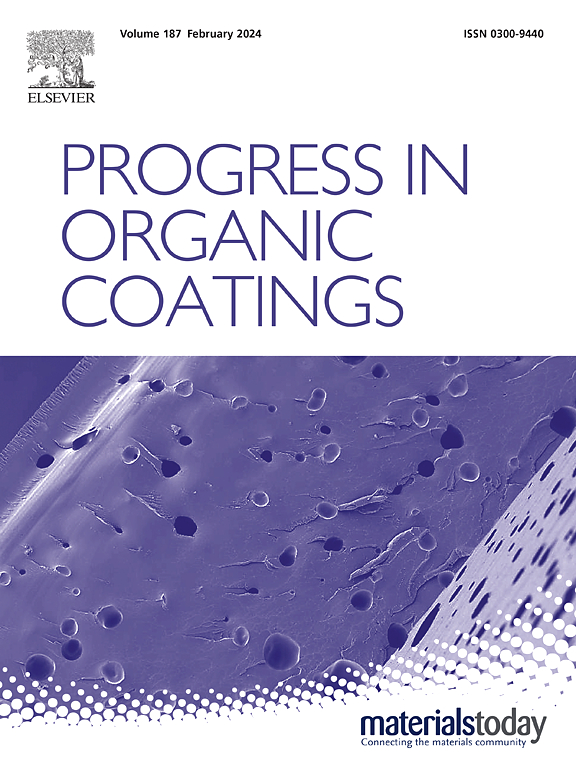Resorcinol–formaldehyde resin combining epoxy resin as composite coating with efficient anti-corrosion resistance and anti-biofouling capacity
IF 6.5
2区 材料科学
Q1 CHEMISTRY, APPLIED
引用次数: 0
Abstract
In marine environments, microbial contamination and corrosion have persistently threatened the integrity of ships and marine equipment, driving the demand for high-performance coatings integrating anti-corrosion and anti-biofouling functionalities. Herein, for the first time, resorcinol-formaldehyde resin (RF) was used as the filler to introduce epoxy resin (EP) to form an RF/EP composite coating with dual-function anti-corrosion and anti-biofouling protection. Anti-corrosion resistance tests, including open circuit potential (OCP), electrochemical impedance spectroscopy (EIS), and neutral salt spray (NSS), revealed that the RF/EP-6 composite coating exhibits superior anti-corrosion properties, with an impedance radius of 1.56 × 109 Ω·cm2, which surpasses the impedance of pure-phase EP (3.64 × 106 Ω·cm2) by more than two orders of magnitude. In addition, the composite coating reflected significant anti-biofouling effects against bacteria (E. coli and S. aureus) and algae (Chlorella), with only a low amount of microorganisms being able to adhere to the surface, which was mainly attributed to the incorporation of RF resin, producing strong oxidative active species (•OH, •O2− and H2O2). Our study introduces an innovative design concept aimed at developing multifunctional coatings that provide both anti-biofouling and anti-corrosion capabilities for marine equipment field.
求助全文
约1分钟内获得全文
求助全文
来源期刊

Progress in Organic Coatings
工程技术-材料科学:膜
CiteScore
11.40
自引率
15.20%
发文量
577
审稿时长
48 days
期刊介绍:
The aim of this international journal is to analyse and publicise the progress and current state of knowledge in the field of organic coatings and related materials. The Editors and the Editorial Board members will solicit both review and research papers from academic and industrial scientists who are actively engaged in research and development or, in the case of review papers, have extensive experience in the subject to be reviewed. Unsolicited manuscripts will be accepted if they meet the journal''s requirements. The journal publishes papers dealing with such subjects as:
• Chemical, physical and technological properties of organic coatings and related materials
• Problems and methods of preparation, manufacture and application of these materials
• Performance, testing and analysis.
 求助内容:
求助内容: 应助结果提醒方式:
应助结果提醒方式:


